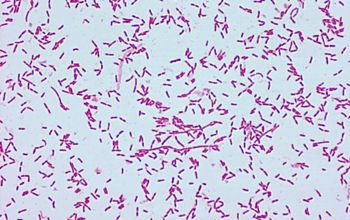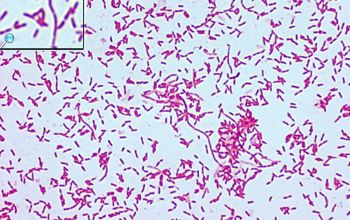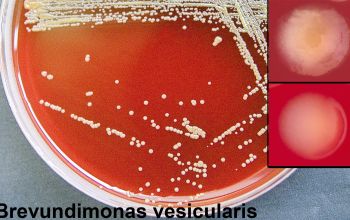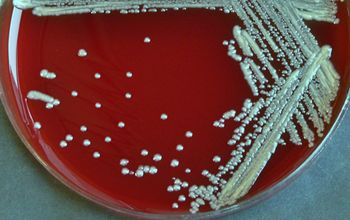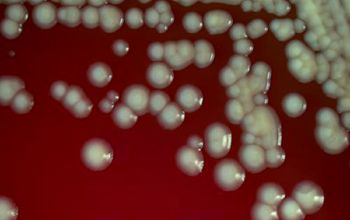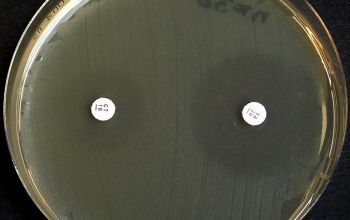Brevundimonas vesicularis
-
General information
B. vesicularis and B. diminuta, formely classified as members of group IV of the genus Pseudomonas, are the most frequently isolated Brevundimonas species in human infections
Taxonomy
Family: Caulobacteriaceae
B. vesicularis and B. diminuta are the only human pathogens.
Not pathogenic: B. aurantiaca, B. intermedia, B. nasdae, B. subvibrioides
Natural habitat
They are ubiquitous in the environment.
Because they survive in a moist environment, they can cause problems in a hospital.
Clinical significance
They are rarely isolated from clinical samples.
Very few cases of bacteremia have been reported, with pneumonia, infective endocarditis and spontaneous bacteria peritonitis being the most common foci of infection.
Both B. vesicularis and B. diminuta have been described as opportunistic pathogens in immunocompromised hosts
-
Gram stain
Straight or slightly curved, Gram negative rods,
0.5-1.0 x 1-5 µm,
Lying; solitair
-
Culture characteristics
-
Obligate Aerobic
BA: grows slowly, after 48 hours the colonies are visible and usually have a dark yellow to orange pigment may be slightly wrinkled.
Not hemolytic
McConkey: growth 25%, non lactose fermenter
BBAØ: no growth
-
-
Characteristics
-
References
James Versalovic et al.(2011) Manual of Clinical Microbiology 10th Edition
Karen C. Carrol et al (2019) Manual of Clinical Microbiology, 12th Edition

